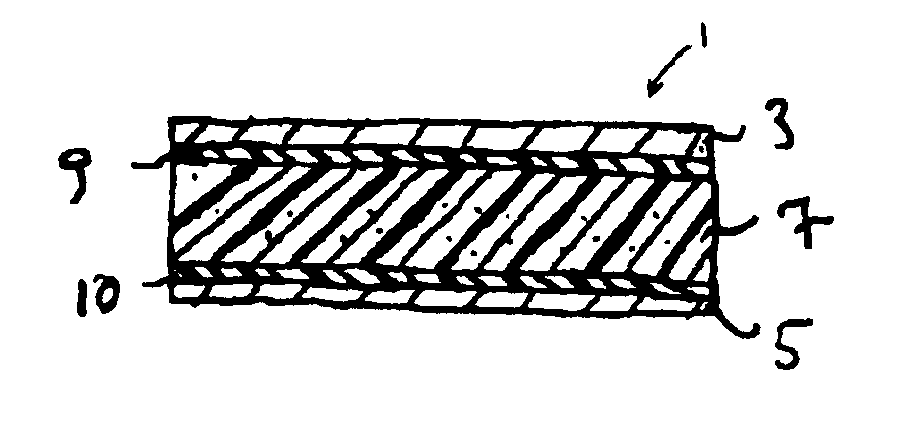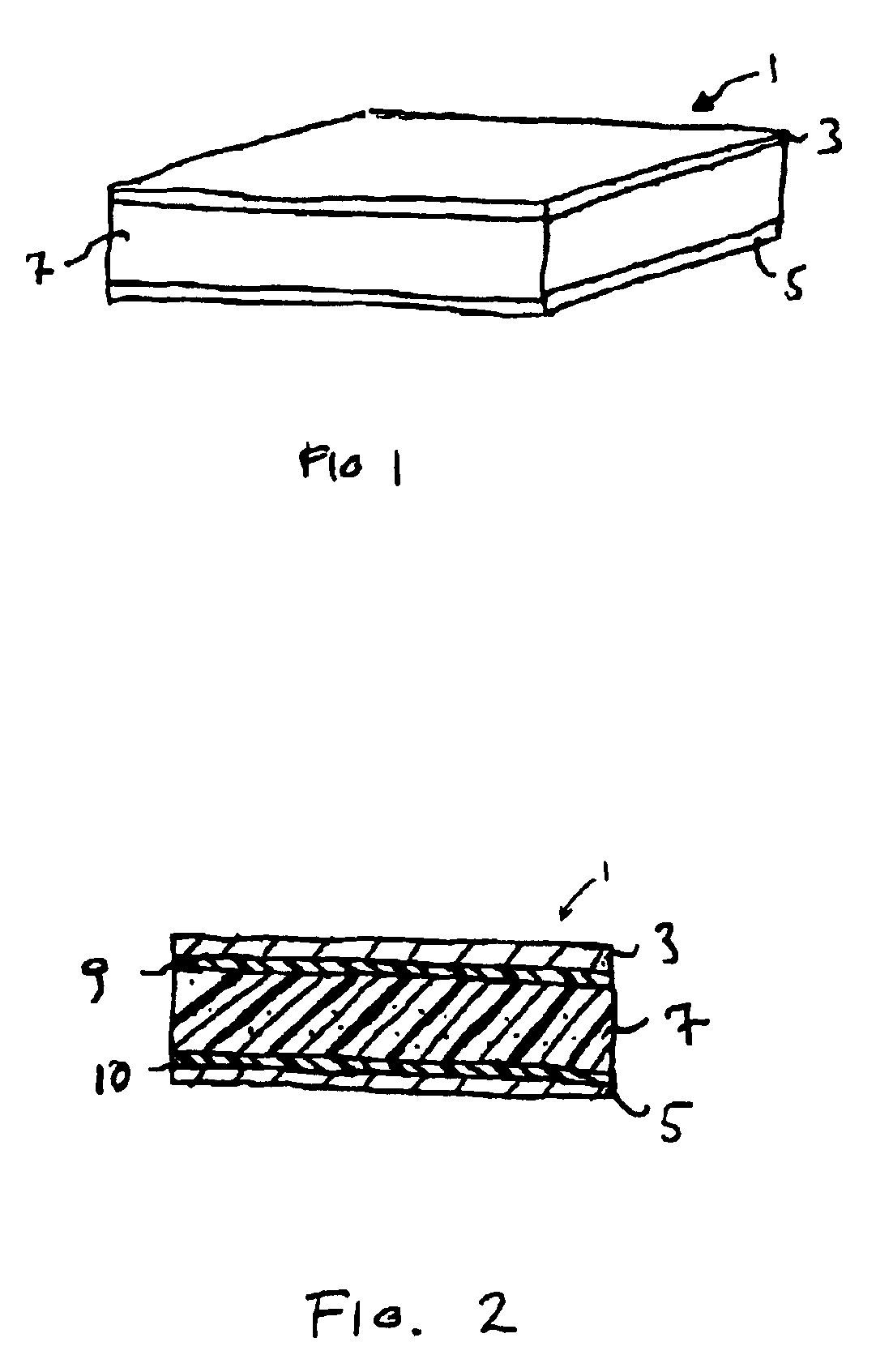Electrical devices containing conductive polymers
a technology of conductive polymers and electrical devices, applied in the direction of resistor details, current responsive resistors, varistors, etc., can solve the problems of electrical continuity disruption and interface failure points, and achieve the effects of improving the electroding of conductive polymers, low contact resistance, and good electrical performan
- Summary
- Abstract
- Description
- Claims
- Application Information
AI Technical Summary
Benefits of technology
Problems solved by technology
Method used
Image
Examples
examples 1 to 22
Use of Low Roughness Foil to Make Low Resistance Devices
[0084]A PTC conductive polymer composition was made by extruding pellets of a melt-processed conductive polymer composition containing 43% by volume carbon black (Raven™ 430, available from Columbian Chemicals) and 57% by volume high density polyethylene (Chevron 9659, available from Chevron) into sheets approximately 0.007 inch (0.18 mm) thick. Sheets were subdivided into sections. Sheets of metal foil as described in Table I were press-laminated onto the polymer sheet sections at 200° C. at approximately 150 psi (10500 g / cm2) for 4 minutes to form laminated sheets approximately 0.010 inch (0.25 mm) thick.
[0085]Table I lists the base foil, the foil thickness, the Ra, the RD, and the Ra*RD for each foil. Foil A was a rolled nickel foil. Foil B was the same as Foil T, except the shiny side of the electrolytic copper foil with a nickel flash surface was bonded to the polymer. Foil C was the matte side of electrolytic nickel foil....
examples 23 and 24
Use of a Crosslinking Agent at the Foil-polymer Interface
[0091]Conductive polymer sheets were prepared as in Example 1, except that the conductive polymer was made from 36% (volume) Raven 430 carbon black and 64% (volume) LB832 polyethylene, available from Equistar, and was extruded to form sheets of 0.010 inch (0.25 mm) thickness. For Example 23, a 0.9% solution of dicumyl peroxide in methanol was applied twice (sequentially) to the roughened surface of the foil, prior to lamination. Lamination of foil onto both sides of the polymer sheet was performed by hot pressing at about 150 psi (10500 g / cm2) at a temperature high enough to activate the crosslinking agent (i.e. to break the peroxide bond), which was about 200° C. The foil used was type W as listed in Table II, an electrolytic nickel foil with nickel nodules on the matte side (the side bonded to the polymer), available from Fukuda Metal Foil and Powder Co., with an RD of 0.97 (MacBeth ColorChecker™ densitometer measurement) an...
example 25
Pulse Plating to Prepare Microrough Electrode Foils
[0094]One oz. (35 μm thick) electrodeposited copper foil was contacted with a dilute sulfuric acid solution (5% by volume) for two minutes, rinsed with water and then immersed in an aqueous bath at 20 to 25° C. with a pH of 2.5 to 3.0 with the following composition (all values in mole / l): nickel sulfate, 0.09; ammonium sulfate, 0.11; sodium sulfate, 0.17; sodium chloride, 0.17; boric acid, 0.20. A conformal layer of nickel was initially plated onto the matte side of the copper foil at a steady DC current density of 2.1 mA / cm2 for 3 minutes. This was immediately followed by a second nickel plating step carried out using square-wave DC pulses using 11% duty cycle at 100 Hz and a peak pulse current density of 210 mA / cm2. Nickel was plated under these pulsed conditions for a total of 3 minutes. A third pulsed plating step was similarly conducted except that the frequency and duty cycle were increased to 200 Hz and 33%, respectively, and...
PUM
| Property | Measurement | Unit |
|---|---|---|
| Ra | aaaaa | aaaaa |
| Ra | aaaaa | aaaaa |
| resistance | aaaaa | aaaaa |
Abstract
Description
Claims
Application Information
 Login to View More
Login to View More - R&D
- Intellectual Property
- Life Sciences
- Materials
- Tech Scout
- Unparalleled Data Quality
- Higher Quality Content
- 60% Fewer Hallucinations
Browse by: Latest US Patents, China's latest patents, Technical Efficacy Thesaurus, Application Domain, Technology Topic, Popular Technical Reports.
© 2025 PatSnap. All rights reserved.Legal|Privacy policy|Modern Slavery Act Transparency Statement|Sitemap|About US| Contact US: help@patsnap.com


